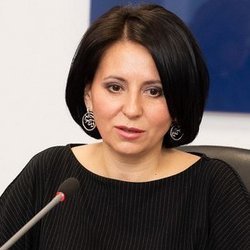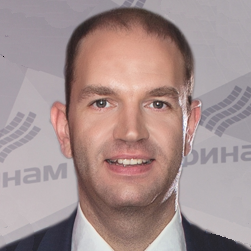Russians rush to stock exchange — number of private investors rise almost threefold
The reduction of the Central Bank rate, uninteresting yield on deposits, new mobile applications — all this has pushed Russians to the stock exchange speculation
The number of clients of the Moscow interbank currency exchange has grown 2,6 times in less than a year and a half, and by the spring of 2020, there have been 5 million newcomers with brokerage accounts. One in ten of them makes a deal at least once a month, Realnoe Vremya analytical department found. The reason for the avalanche growth was the reduction of the Central Bank's rate, which led to an uninteresting yield on deposits: Russians began to look for more profitable investment tools, experts and market participants believe. Banks believe that an important role was played by new mobile services that made exchange-traded investment more accessible. Read about this and how the prosperous Tatarstan has decided to speculate on the stock exchange in the spring of 2020 in our article.
How the number of exchange clients was growing
As the analytical service of Realnoe Vremya found out, from December 2018 to the present on MICEX (Moscow Interbank Currency Exchange), there was an explosive growth in the number of registered customers. Over the past 15 months, their number has grown 2,6 times, reaching almost 8 million by April this year. The rapid growth began in February last year, for the spring of 2019, the number of participants increased by 1 million — from 2,9 to 3,9 million. By October, their number has already reached 5 million, by the end of the year — 6 million. In 2020, MICEX has added another 2 million customers.
However, most of them are individuals. Out of more than 8 million registered clients, only 26,000 are legal entities, and 20,000 are foreigners (individuals and legal non-residents). The clients who transferred their funds to trust management — only 76,500. That is, if the number of physical clients registered on MICEX since January of last year has grown 2,5 times, the number of foreign individuals — only 1,4 times, and accounts in trust management — 1,6 times.
At the same time, newcomers show unusual activity
Let us note that the number of registered clients does not directly indicate an increase in the number of direct physical participants, but it is directly correlated with it. Any individual or legal entity can open several accounts with one or different brokers in their own name — these accounts are counted among the registered clients. However, all these accounts are registered in the same name or company, and they are registered on MICEX as unique clients. The number of unique clients, roughly speaking, citizens of Russia or foreign countries with a specific first and last name, has increased by 2,4 times since the beginning of last year — from 2 million to 4,9 million. On average, one person thus registered more than one account on the exchange.
The very activity of clients on the Moscow Exchange increased even more. The number of active clients in the trading system, that is, who made at least one transaction during the month, fell at the beginning of 2019. The number of such clients in January 2019 fell from 200,000 to 188,600 (which is associated with the January holidays) but by early spring of last year reached 192,000, and the number of active clients consistently started to grow since last summer, rising to over 300,000 of those who concluded at least one deal per month in October, 400,000 active participants of MICEX gained by the end of last year. And by April 2020, more than 600,000 customers were already active on the exchange. Thus, with the growth of the number of new registered and unique clients by 2,5 times, the number of active Russian clients, individuals, has grown by as much as 3,5 times (there are also more active foreigners, but by 2,5 times).
Reduction of Central Bank's rate, uninteresting yield on deposits — why Russians chose exchange
A significant increase in the number of clients is associated with a gradual decrease in the profitability of other investment options, according to Dmitry Lesnov, the head of the monitoring, control and development of customer service at FINAM Group. First of all, this applies to deposits. According to Lesnov, now the average rate on them is about 5%, and the shares of many companies not only have a much higher dividend yield but also retain a significant potential for growth in value even after the normalization of the situation with the coronavirus pandemic. This is what attracts more and more investors to the stock market.
Vadim Lozhkin, the director of Otkritie Broker's branch in Kazan, explained to Realnoe Vremya that the current significant influx of clients to the financial market is primarily related to the process of reducing the key rate of the Central Bank of the Russian Federation, which directly affected the profitability of bank deposits, which, as a result, also decreased. This has forced citizens to look for new, more profitable ways to save and increase their savings, the expert agrees with the colleague from Finam.
Besides, Lozhkin draws attention to the fact that in the first quarter the domestic stock market was actively declining, which created additional opportunities for implementing long-term investment plans at attractive prices. Sberbank also agrees with the director of Orkritie Broker, whose representatives, however, said that the growth of the base was influenced not only by the reduction of interest rates on deposits but also by the development of digital services.

Why many people work on the exchange using the buy-and-forget system
Despite the growth of registered clients, the number of active MICEX clients in the total volume is still low. Before the last boom, the share of those who carried out at least one transaction a month did not exceed 10% at all, in March-April 2020, there were, however, already 12-13,5%, the analytical service of Realnoe Vremya found out. Dmitry Lesnov explains that the majority of individuals who open new accounts on the exchange are conservative investors. Conservative investors prefer to invest in reliable and profitable (compared to deposits in a bank) instruments. There is also another category of clients — long-term investors who have now formed portfolios of shares of companies that can show significantly higher returns on the investment horizon in a few years compared to alternative investments.
“That is, both categories of clients adhere to strategies that do not involve regular trading operations. This is a normal situation. As a rule, they conduct only a few transactions a year. This is why the share of active accounts is so low," Lesnov is sure.
Active trading is not suitable for every client, says Vadim Lozhkin, the director of Orkritie Broker branch in Kazan, many people work on the stock exchange using the buy-and-forget system. And this approach is just the most productive for those who invest for the long term and are not going to make money on constant changes in stock prices.
Number of brokerage accounts and transactions is also growing in Tatarstan

The majority of new clients lack investment experience and knowledge about financial planning and markets — they do not know where to start investing, how and what tools to choose, which explains the low activity of the majority in Sberbank. The largest bank in the country, they noted, therefore, special attention is paid to the topic of financial literacy training not only for existing clients of brokerage services but also for the Russian population in general.
The number of brokerage accounts in Sberbank in all regions of Russia has increased by 30% since the beginning of the year, and in Tatarstan — by 34%. More than 25% of Tatarstan's clients have made transactions only in 4 months of 2020.
“The exchange considers the account active if there is at least one operation per month. New investors tend to invest in the lowest-risk instruments — bonds," explains Maryam Davletshina, VTB manager in Tatarstan. “In the month of purchase, the account is active, then, if the customer does not make new transactions for 11 months, it leaves the active list. VTB opened 8,200 brokerage and investment accounts in Tatarstan from January to April this year, which is more than seven times higher than the same indicator last year. The share of funded accounts was 61%.
Funded accounts, that is, accounts that have funds, are just for active clients and directly correlate with each other. However, it should be noted that if a client tops up the account money, buys stocks and is not going to sell them in the following months, in the time of the transaction the account will be considered active, subsequently ceases to be so. For obvious reasons, the share of funded accounts will be higher for real players who have experience of investing in the stock market. For example, the share of such accounts in Finam is high, Dmitry Lesnov said. Simply because a significant part of the company's client base is investors with serious experience and knowledge in the field of investment, who show high trading activity.
In prosperous Tatarstan in the spring of 2020, they preferred to speculate on the stock exchange

Dmitry Lesnov explains the growth in the number of clients in Tatarstan by the fact that the region has a high level of income. This state of affairs cannot but affect the dynamics of opening brokerage accounts. Finam, as well as Sberbank, is also recording a higher growth in opening accounts in Tatarstan than even the national average. The situation in Orkritie Broker is slightly different, Vadim Lozhkin told Realnoe Vremya: from January 1, 2019 to April 30, 2020, more than 1,600 new accounts were opened in Otkritie Broker branches in Tatarstan, but this is still 40% less than in the entire 2019. “Accordingly, at the end of the year, we expect a significant increase in new customers.”
However, according to Lozhkin, the number of active clients in Tatarstan is significantly higher than in Russia as a whole. In 2019, their share was 38%, and in 2020 it decreased slightly to 33%, due to the influx of a large number of novice investors without experience in trading on exchange markets.
“In general, the behaviour of clients of Otkritie Broker in Tatarstan differs significantly from the actions of investors in Russia as a whole. For example, for the most part, the company's clients trade on the stock market (in March — 70% of all active ones, in April — 63%), while in Tatarstan during this period the nature of transactions was speculative — more than half of transactions were made on the futures section of the Moscow exchange. Clients actively traded futures for the dollar, euro, gold, Brent, RTS Index, Sberbank, VTB and Gazprom shares, Moscow Exchange Index, USD, LUKOIL and Rosneft shares," he said.
At the same time, only 24% of Otkritie Broker's clients traded on the Moscow stock market. There, Tatarstan citizens actively bought cheaper shares of Gazprom, ordinary and preferred shares of Sberbank and VTB. The oil industry was not spared either, they acquired LUKOIL, Rosneft, and Tatneft's ordinary and preferred securities. They also believed in the prospects of Aeroflot.
In general, in Russia in March and April, the interest in the currency increased among customers due to rate hikes, but not in Tatarstan. In the foreign exchange market, only 2% of clients converted their currency. Besides, in April, the company's clients across Russia actively bought shares of foreign companies on American NYSE and NASDAQ exchanges, as well as on the St. Petersburg Stock Exchange. At the same time, in Tatarstan, the share of transactions in foreign markets was only 2%. The average amount of assets on the accounts of clients of Otkritie Broker in Russia is just over 880,000 rubles. In Tatarstan, a little more — more than 882,000 rubles. In general, customers in Kazan continued the course taken in March for active replenishment of accounts. And compared to last year, we increased the assets on our accounts by 85%.
The share of Russians with brokerage accounts is still very small — the growth in the number of MICEX clients will continue
Experts and market participants polled by Realnoe Vremya believe that the positive dynamics both in the number of new clients and in the growth of the number of active players on the exchange will continue. Private investors continue to show increased interest in brokerage services, they note in Sberbank:
“We see that since the beginning of the year, the total number of brokerage accounts, active clients, and funded accounts has increased and the volume of trading operations has increased. We think that the positive dynamics will continue, the market will grow and develop.
FINAM Group expects the same in connection with the expected further reduction of the Central Bank's key rate, and, consequently, a decrease in the profitability of bank deposits, the number of brokerage accounts will continue to grow at a rate approximately comparable to the first quarter, Dmitry Lesnov is sure:
“Now the share of Russians who have brokerage accounts is a little more than 5%. For a financially developed country, this is still a fairly low figure. Besides, as we emerge from the pandemic, resource prices will also recover, and, consequently, the share price of Russian companies will also grow. All this, of course, will lead to an increase in the inflow of new investors to the stock market in the future.
“A private investor becomes a significant player on Moscow Exchange”
Lozhkin from Otkritie Broker believes that the most active phase is over, although the influx of new clients to the stock market will not stop. This process will be stimulated by a further drop in the yield of deposits. The ratio of active and passive investors in Russia as a whole will remain, he believes, although there is hope that the growth of financial literacy will gradually encourage the use of different strategies, not only “buy-and-forget”, and will help to overcome the first barrier of self-doubt.
“In any case, a private investor becomes a significant player on Moscow Exchange, so brokers are required to make more active use of training programmes and information and analytical support. Another significant trend for the financial market is generational change. Among investors, the majority are young and middle-aged people, for whom the financial market is not something hostile and incomprehensible. Accordingly, the need for more active management of their savings will direct representatives of these age categories to use investment opportunities to generate their income, including pension," the representative of Otkritie Broker is sure.